
Just like the same movement in cinema, American literature also changed significantly during the rise of counter culture in the 60’s and 70’s. Rising out of the Beat generation and it’s poetic forbearers like Allen Ginsberg, the hippie movement brought it’s own wave of groundbreaking, socially conscious writing to the forefront of attention in the minds of young American. Tackling everything from social taboos, to the rights of the oppressed, to psychedelic philosophizing, to just plain old “sticking it to the man,” there were many books both fiction and non-fiction that helped to define that turbulent era. One prominent voice to emerge from that time period, whose writing particularly evoked all the rage, restlessness, and free-spirited thinking of the hippie movement, was novelist Ken Kesey. Kesey was not your stereotypical hippie. He was broad shouldered, had a horseshoe haircut that he often hid under a beret, and was also an avid outdoorsman who hunted. He often viewed himself as a bridge between the beat generation and the hippies, as he embodied the enduring spirit of one into the other. He founded the hippie collective known as the Merry Pranksters, who travelled across the country aboard their psychedelically painted school bus and hosted “happenings” in numerous cities where they would share their art as well as psychotropic drugs with new people. These “happening” were immortalized by fellow novelist Tom Wolfe in his 1968 book The Electric Kool-Aid Acid Trip. He was also an early mentor of a little band known as The Grateful Dead. But, it’s through his writing that we best know him. He didn’t write much throughout his career, often spending most of his time as a cultural ambassador as well as a teacher, but the stuff he did write are touchstones of the era that he participated in. He often considered his second novel, 1964’s Sometimes a Great Notion, to be his magnum opus, but the novel he is better known for is his debut, which of course spawned it’s own Oscar-winning adaptation; 1962’s One Flew Over the Cuckoo’s Nest.
Kesey had it in his mind to be a writer very early on. After earning his English degree at the University of Oregon, he continued onto a graduate creative writing program at Stanford. While there, he worked part-time on a graveyard shift at mental health facility. At the same time, he also earned a bit of extra cash volunteering to take psychoactive drugs as part of Project MKUltra. Both of these side gigs during his formal education no doubt inspired him with the subject of his first novel. He completed his manuscript almost immediately after graduation, and it was published not long after in 1962. It was a controversial book to say the least in it’s time, with it’s very anti-authoritarian message, and it was even banned in some parts of the country. But, in general, it caught on with young readers, especially those of the beat generation and in the burgeoning counter culture. Also surprisingly, it caught the attention of some big names in entertainment. Actor Kirk Douglas optioned the book almost immediately for a stage adaptation, which was brought to Broadway by playwright Dale Wasserman. The play was likewise also a hit, and it’s been revived and staged many times over the years since. However, a film adaptation took a bit longer to come together. Douglas maintained the film rights as well, but no studio would finance the project, often objecting to the tone and message of the story. After a decade, Kirk Douglas had grown too old to play the lead part of Randall McMurphy anymore, and he was starting to look for other parties interested in taking the project off his back. Well, that interested party turned out to be his son Michael Douglas, who was eager to prove himself as a movie producer. Michael eventually landed a deal with Warner Brothers, with a script adaptation by Lawrence Hauben and Bo Goldman. Czechoslovakian filmmaker Milos Forman was tapped to direct, this being only his second English language film after Taking Off (1971). Kesey largely remained hands off during the making of this movie, but the production did honor his native Oregon roots by filming the movie at a real asylum in the city of Salem. Indeed, comparing the book with the finished movie, one will find an almost faithful adaptation, though with some very crucial difference.
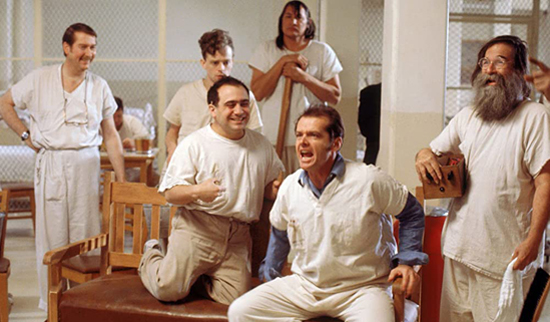
“I must be crazy to be in a loony bin like this.”
One thing that the movie gets almost exactly right in it’s adaptation is the core theme of the story. The book One Flew Over the Cuckoo’s Nest is a novel about individualism, and how institutions are built to break down the free will of those within it and why it’s necessary to fight back against it. At the heart of the story is the clash between two different mindsets; that of the revolutionary fervor, embodied in the character of inmate Randle Patrick McMurphy, and that of rigid conformity, embodied in the caretaker of the facility, Nurse Ratched. The brilliant thing about the story is that neither character is purely good or evil. McMurphy enters the mental asylum feigning illness as a way to receive what he thinks to be lighter incarceration than prison, which he’s been sentenced to for statutory rape. Nurse Ratched is by all accounts well liked outside of work, but in the asylum, she is a manipulative, passive aggressive tyrant. There are a lot shades of grey with these characters, which is what makes Kesey’s novel such a richly layered narrative. McMurphy is likewise manipulative, but his challenging of Ratched’s authority and refusal to comply, even if it’s sometimes for selfish needs, is an inspiring shake-up of the established order. What Kesey celebrates in McMurphy is the refusal to just let the system grind down the individualism of the people within it. As demonstrated through scenes where we meet the individual patients at the asylum, they are often kept under control through rigorous routine, harsh rules for stepping out of line, coercion through rewards and public shaming. McMurphy, unlike Ratched, sees the individualism in each of the different inmates and treats them like they should be treated; as human beings. The other inmates suddenly gain a sense of their own self worth once again, and one by one begin to rise together with Randle in pushing back against Ratched. The rebellious spirit of course doesn’t last long and McMurphy pays the price. But, in a very important line of dialogue, he implants the seed of rebellion in all of them, after failing to lift a hydrotherapy console in the washroom he says, “But I tried, didn’t I? Goddamnit, at least I did that.” Even if rebellion leads to destruction, as it does by the end of the story, the idea itself endures and thrives.
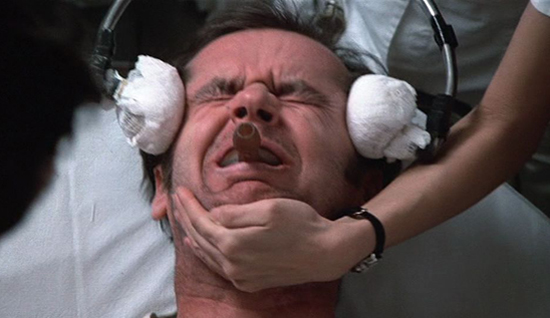
“Mmmmm, Juicy Fruit.”
It cannot be said enough how well this movie is cast across the board. After Kirk Douglas had outgrown the role that he originated on stage, there really was only one logical choice for Randle McMurphy. Jack Nicholson was at the time of this film’s making hitting a career highpoint. He had already won acclaim for roles in Five Easy Pieces (1970), The Last Detail (1973), and of course Chinatown (1974), all three which earned him Oscar nominations for Best Actor. He was steadily becoming the movie star of the moment in the mid-70’s, and One Flew Over the Cuckoo’s Nest was a movie that was just tailor made for him. When you read Randle McMurphy on the page, you can think of no one other than Nicholson in the role. Fast talking, abrasive, and irreverential, you would almost think Ken Kesey wrote the character with Nicholson in mind; which I doubt was the case as Nicholson was just a bit part actor back when Cuckoo’s Nest was first published. It’s honestly a good thing that the movie adaptation had to wait ten years just so Jack could be ready to play the part. He nails every part of the movie, capable of being laugh out loud funny but also sincere in the more dramatic moments as well. But, he is pretty much matched in every way by the breakout performance of Louise Fletcher as Nurse Ratched. Fletcher in many ways improves upon the character as she is written in the novel. The way that she exudes menace through such a cool demeanor and controlled voice is remarkable. She is the perfect embodiment of every stuffy bureaucrat who dehumanizes people down to pawns in their own little power play. The way she breaks down her patients, especially Billy Bibbit in the film’s finale, with her cold hearted use of shame is a very chilling portrayal of institutional evil put on screen. Fletcher won out the role after performers like Angela Lansbury and Anne Bancroft passed on it, and like Nicholson as McMurphy, it’s a part that seemed to be made just for her.
What I find the most interesting about the remainder of the characters is how they are fleshed out by the movie in a way that they aren’t in the book. The biggest example of this is the thing that is most different between page and screen. That would be the character of Chief Bromden. The tall, silent Native American patient at the asylum, played in the movie by Indigenous actor Will Sampson, is a secondary but still very important character in the film. However, in the book, his role is fleshed out because he is actually the point-of-view character through which we witness the story unfold. We get much more insight into Bromden’s mindset, and it’s interesting seeing how someone like McMurphy is observed through someone else’s eyes. In the movie, McMurphy is the focal point character, and Bromden grows into an important part of the story the more that McMurphy interacts with him. Even with the different POV’s on which the book and movie hinge around, the story still effectively gets it’s themes across. It kind of works a little more interesting in the film, as Bromden remains an enigma for much of the first half, being a stoic mute. It helps to raise the surprise level even more when he does break out of his shell, demonstrating the McMurphy’s influence on him. Even as McMurphy succumbs to the limits of his rebellion, it’s Bromden who in the end carries his spirit on, as he smashes the window open with the hydrotherapy console that couldn’t be lifted up before, leading the the movie’s bittersweet but uplifting conclusion. The book allows the reader to understand the thought process of one taking in the lessons of defiant rebellion, but the movie also makes that transformation feel rewarding as well, because we are able to see what the spark of rebellion is like when found in the unlikeliest of places.
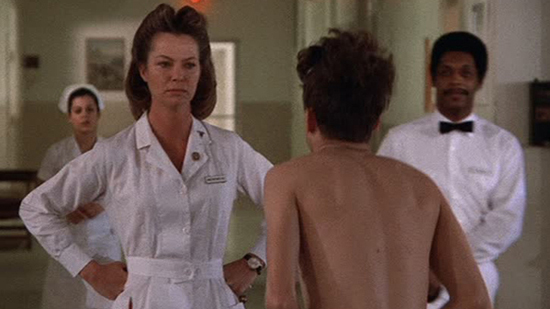
“You know Billy, what worries me is how your mother is going to take this.”
I will also say that the thing that also brings out the authenticity of the adaptation is the choice of location as well. The insane asylum that we see in the movie is the real deal, and probably not that unlike the one that inspired Kesey in his writing. An interesting side note, the role of the asylum’s director was played by the actual director of the Oregon State Hospital where they filmed. Milos Forman and his team did such a remarkable job turning the asylum itself into a character. The way that Kesey describes the interiors of the hospital in his novel, with it’s cold sterile feeling, comes across perfectly in the movie. Not only that, but Forman also utilized the local Oregon flavor of the setting as well. Being an Oregon native myself, I can tell you that this movie is a source of pride among Oregonians. No where does the movie show off the beauty of the state of Oregon better than in the scene where McMurphy hijacks the asylum’s field trip and takes the patients on a fishing trip off the coastline. This is another moment in the movie that perfectly captures the spirit of Kesey as a character, since he himself was an avid fisherman, and often spent many trips fishing up and down the coast. My hometown of Eugene, Oregon was ground central of Kesey’s Merry Prankster movement. To this day, many of Kesey’s disciples still live in the Eugene metro area and are continuing to contribute to the counter culture flavor still found there. Kesey remained a fixture in the local arts scene until his death in 2001, and the city honored him with a statue in the town square. Kesey’s home state of Oregon was just as big of a muse in his writing as anything else, and though it’s as integral to the plot of Cuckoo’s Nest as it is to Sometimes a Great Notion, it’s still nice to see that the movie went the extra mile to bring it’s location shoot to the Beaver State. That’s a major contribution brought to the film by director Milos Forman, whose style was very much shaped by his years working in documentaries for Czechoslovakian television. He knew the importance of having his movie set in real places rather than on a soundstage. It’s something he would apply on even larger scales later on, including the Oscar-winning Amadeus (1984).
It’s interesting to see how differently both the book and the movie were received in their respective times. The book One Flew Over the Cuckoo’s Nest was in many ways far more subversive in the early sixties than the movie was in the mid-seventies. For the book, the country had yet to go through traumatic experiences like the Assassination of President Kennedy or the Vietnam War, so it’s plea for rebellion was not as widely accepted in it’s time. It was subversive to challenge authority, something that was only valued by the beatniks and counterculture, and not the mainstream. But, of course, there was plenty to be rebellious about in that time. Marginalized groups like African Americans, the LGBTQ community, and Indigenous Tribes were beginning to march for their rights in the time period that Kesey was writing his novel. Though he used the allegory of patients within an insane asylum, the same theme of demanding dignity in a world built to suppress them still rang true through in Kesey’s writing, and so many activists found inspiration in the way Randle McMurphy created what the late congressman and activist John Lewis called “good trouble.” By the time the movie was released a decade later, the world had changed dramatically. The psychedelic 60’s gave way to the rebellious 70’s, and when One Flew Over the Cuckoo’s Nest reached theaters in 1975, the counterculture was not only thriving, it had become the culture. The war in Vietnam was in it’s final, miserable days and the hard fought for Civil Rights Act was the law of the land. But, this was also the era of Watergate, and America was still facing a crisis of authority pushing down on the oppressed. However, in that expanse of time, people now knew to spot the flaws in the system, and call out those who were abusing their power for their own satisfaction. In that respect, Nurse Ratched changed from a symbol of the system to a much more defined monster, reminiscent of the would be authoritarians like President Nixon who were trying to put the counterculture back into the shadows of society. Across it’s different eras, the story remarkably maintained it’s resilience, but as we saw, it also gained new and interesting layers between book and film. Even almost 50 years later, there are still many other elements to the story that gain new significance in perspective with the times.
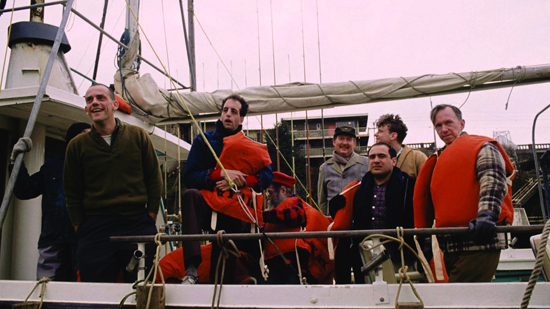
“You’re not an idiot. Huh! You’re not a goddamn looney now, boy. You’re a fisherman!”
As a movie, One Flew Over the Cuckoo’s remains a landmark in cinema. It was only the second movie ever to sweep the top five honors at the Academy Awards (Best Picture, Best Director, Best Actor, Best Actress, and Best Screenplay) after It Happened One Night (1934), and the only other movie to do that since has been The Silence of the Lambs (1991), putting Nest in an exclusive club. Nicholson of course finally walked away a winner after so many nominations, and honestly, of all his performances this was the right one to honor him for. His work as Randle Patrick McMurphy is just iconic, and so full of energy. Ken Kesey gave his protagonist the initials R.P.M. for a reason, and Nicholson is the one and only actor to truly bring that character to full potential on screen. Louise Fletcher likewise delivers an iconic performance as Nurse Ratched, turning her into one of cinema’s most unforgettable villains. The supporting cast, many who came from the Broadway and Off-Broadway stagings, also includes an incredible group of up-and-comers from that era like Danny DeVito, Christopher Lloyd, and Brad Dourif. But, it’s also interesting to see how much of the book is maintained through the translation. Every moment of the book makes it on screen and the only real big difference is whose eye’s the story is seen through. Speaking of the character of Chief Bromden, you couldn’t ask for a more emotionally stirring finale than what happens between him and Randle in the closing minutes. There you see the true power of rebellion manifest. As the spirit is destroyed in one person, the lobotomized Randle, it is carried forward through Bromden, the one he inspired the most. And as Bromden runs off into the horizon after making his breakthrough, we are left feeling optimistic about the future, even through a moment of despair. The will to fight for a better world is greater than one man. Ken Kesey saw injustice in his world, and it’s interesting that he chose to spotlight those deemed broken by society as his champions in a cry for humanity. To this day, that is what has kept One Flew Over the Cuckoo’s Nest such a powerful and relevant story. We still see people treated unfairly in uncaring engine of our society. For Kesey, the purpose of his story was to help convince the reader that no one is helpless and doomed to a life within walls. We just need to be convinced that we matter in the world, and that it’s worth demanding better of the system that is built to look over us.
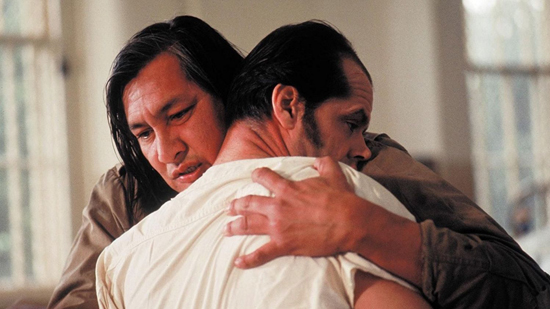
“One flew East. One flew West. One flew over the cuckoo’s nest.”